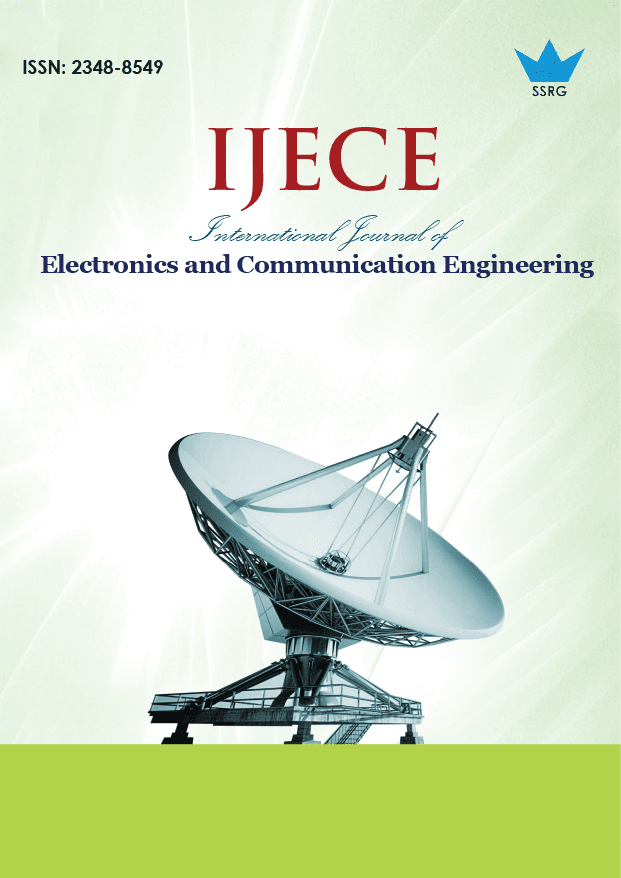GT-SOH: A Graph-Transformer Contrastive Learning Framework with Starfish Optimization for Accurate State-of-Health Battery Prediction in EV

| International Journal of Electronics and Communication Engineering |
| © 2025 by SSRG - IJECE Journal |
| Volume 12 Issue 10 |
| Year of Publication : 2025 |
| Authors : R. Natarajan, Jeya Prakash Kadambarajan, K. Selva Sheela, S. Karthik |
How to Cite?
R. Natarajan, Jeya Prakash Kadambarajan, K. Selva Sheela, S. Karthik, "GT-SOH: A Graph-Transformer Contrastive Learning Framework with Starfish Optimization for Accurate State-of-Health Battery Prediction in EV," SSRG International Journal of Electronics and Communication Engineering, vol. 12, no. 10, pp. 163-176, 2025. Crossref, https://doi.org/10.14445/23488549/IJECE-V12I10P114
Abstract:
In specific, accurate, and precise prediction of the State-of-Health (SOH) of the Electric Vehicle (EV) battery system will be crucial to ensure battery safety, longevity, and optimal management of energy. Existing SoH estimation models, which include Machine Learning (ML) and Deep Learning (DL) schemes, most often struggle in capturing the most complex temporal and spatial dependencies in the degradation of the battery. In this paper, a novel Graph-Transformer Contrastive Learning (GT-SoH) framework, which incorporates Graph Neural Networks (GNNs) termed Transformer-based temporal modeling, Contrastive self-learning, and Starfish Optimization Algorithm (SFOA) for hyperparameter tuning, is proposed and is denoted as the (GT-SOH-SFOA) framework. A GNN model is responsible for capturing spatial interdependencies among battery cells, whereas a Transformer encoder models GNN patterns. A contrastive learning function is used for enhancing the generalizability of learning a robust representation of features from unlabeled battery datasets. In addition, SFOA is employed to tune the hyperparameters, thus ensuring optimal performance for balancing exploitation and exploration in the process of optimization. The hybrid loss function, which integrates Mean Absolute Error (MAE) loss and contrastive loss, ensures precise SOH estimation, thus reducing overfitting. An experimental evaluation is carried out for various metrics like Mean Absolute Error (MAE), R2, RMSE, and Max Error on four datasets, like Musoshi, NASA, Stanford, and the BMW i3 battery dataset, and outcomes attained demonstrate that the GT-SOH-SFOA proposed model outperforms existing models compared, thereby offering high prediction accuracy and robustness. Therefore, it is concluded that the proposed scheme offers a scalable, interpretable, and optimized solution for real – time battery health monitoring in EVs.
Keywords:
State-of-Health (SOH), Electric Vehicle (EV), Battery health prediction, Graph-Transformer Contrastive Learning, Starfish optimization algorithm, Graph Neural Networks.
References:
[1] C. Pratheeba, and Sukumar, “Hybrid HGRN-SCSO Technique for Enhanced Prediction of Remaining Useful Life in EV Batteries,” Electrical Engineering, vol. 107, pp. 5311-5323, 2025.
[CrossRef] [Google Scholar] [Publisher Link]
[2] Vankamamidi S. Naresh et al., “Optimizing Electric Vehicle Battery Health Monitoring: A Resilient Ensemble Learning Approach for State-Of-Health Prediction,” Sustainable Energy, Grids and Networks, vol. 42, 2025.
[CrossRef] [Google Scholar] [Publisher Link]
[3] Pooja Kumari, and Niranjan Kumar, “Hybrid Optimized Deep Learning Approach for Prediction of Battery State of Charge, State of Health and State of Temperature,” Electrical Engineering, vol. 106, pp. 1283-1290, 2024.
[CrossRef] [Google Scholar] [Publisher Link]
[4] Ramprabu Jayaraman, and Rani Thottungal, “Accurate State of Charge Prediction for Lithium-Ion Batteries in Electric Vehicles using Deep Learning and Dimensionality Reduction,” Electrical Engineering, vol. 106, pp. 2175-2195, 2024.
[CrossRef] [Google Scholar] [Publisher Link]
[5] Mona Faraji Niri et al., “State of Power Prediction for Lithium-Ion Batteries in Electric Vehicles via Wavelet-Markov Load Analysis,” IEEE Transactions on Intelligent Transportation Systems, vol. 22, no. 9, pp. 5833-5848, 2021.
[CrossRef] [Google Scholar] [Publisher Link]
[6] Khalid Akbar et al., “A Machine Learning-Based Robust State of Health (SOH) Prediction Model for Electric Vehicle Batteries,” Electronics, vol. 11, no. 8, pp. 1-14, 2022.
[CrossRef] [Google Scholar] [Publisher Link]
[7] Guangzhong Dong, Weiji Han, and Yujie Wang, “Dynamic Bayesian Network-Based Lithium-Ion Battery Health Prognosis for Electric Vehicles,” IEEE Transactions on Industrial Electronics, vol. 68, no. 11, pp. 10949-10958, 2021.
[CrossRef] [Google Scholar] [Publisher Link]
[8] Guangyi Yang et al., “State of Charge Estimation of Lithium-Ion Battery for Underwater Vehicles Using MM-UKF Under Hierarchical Temperature Compensation,” IEEE Access, vol. 12, pp. 95831-93845, 2024.
[CrossRef] [Google Scholar] [Publisher Link]
[9] Xiangbo Cui, and Teta Hu, “State of Health Diagnosis and Remaining Useful Life Prediction for Lithium-ion Battery Based on Data Model Fusion Method,” IEEE Access, vol. 8, pp. 207298-207307, 2020.
[CrossRef] [Google Scholar] [Publisher Link]
[10] Jingyun Xu et al., “State of Health Diagnosis and Remaining Useful Life Prediction of Lithium-Ion Batteries based on Multi-Feature Data and Mechanism Fusion,” IEEE Access, vol. 9, pp. 85431-85441, 2021.
[CrossRef] [Google Scholar] [Publisher Link]
[11] Geunsu Kim et al., “Electric Vehicle Battery State of Charge Prediction based on Graph Convolutional Network,” International Journal of Automotive Technology, vol. 24, pp. 1519-1530, 2023.
[CrossRef] [Google Scholar] [Publisher Link]
[12] Jianqiang Gong et al., “Predictive Modeling for Electric Vehicle Battery State of Health: A Comprehensive Literature Review,” Energies, vol. 18, no. 2, pp. 1-37, 2025.
[CrossRef] [Google Scholar] [Publisher Link]
[13] Chi Zhang edt al., “Novel Battery State of Health Estimation and Lifetime Prediction Method based on the Catboost Model,” Energy & Fuels, vol. 38, no. 11, pp. 10310-10323, 2024.
[CrossRef] [Google Scholar] [Publisher Link]
[14] Anantha Padmanabhan N K et al., “An Interpretable Electric Vehicles Battery State of Charge Estimation using MHDTCN-GRU,” IEEE Transactions on Vehicular Technology, vol. 73, no. 12, pp. 18527-18538, 2024.
[CrossRef] [Google Scholar] [Publisher Link]
[15] Ruohan Guo, and Weixiang Shen, “Lithium-ion Battery State of Charge and State of Power Estimation based on a Partial-Adaptive Fractional-Order Model in Electric Vehicles,” IEEE Transactions on Industrial Electronics, vol. 70, no. 10, pp. 10123-10133, 2023.
[CrossRef] [Google Scholar] [Publisher Link]
[16] Ruohan Guo, and Weixiang Shen, “A Model Fusion Method for Online State of Charge and State of Power Co-Estimation of Lithium-Ion Batteries in Electric Vehicles,” IEEE Transactions on Vehicular Technology, vol. 71, no. 11, pp. 11515-11525, 2022.
[CrossRef] [Google Scholar] [Publisher Link]
[17] M.S. Hossain Lipu et al., “Real-Time State of Charge Estimation of Lithium-Ion Batteries using Optimized Random Forest Regression Algorithm,” IEEE Transactions on Intelligent Vehicles, vol. 8, no. 1, pp. 639-648, 2023.
[CrossRef] [Google Scholar] [Publisher Link]
[18] Yunhong Che et al., “Battery States Monitoring for Electric Vehicles based on Transferred Multi-Task Learning,” IEEE Transactions on Vehicular Technology, vol. 72, no. 8, pp. 10037-10047, 2023.
[CrossRef] [Google Scholar] [Publisher Link]
[19] Xinyou Lin et al., “Stochastic Model Predictive Control Strategy With Short-Term Forecast Optimal SOC for a Plug-In Hybrid Electric Vehicle,” IEEE Transactions on Transportation Electrification, vol. 1, no. 4, pp. 8685-8697, 2024.
[CrossRef] [Google Scholar] [Publisher Link]
[20] Li-ion Battery Aging Datasets, NASA Open Data Portal, 2023. [Online]. Available: https://data.nasa.gov/dataset/li-ion-battery-aging-datasets
[21] Edoardo Catenaro, and Simona Onori, “Experimental Data of Lithium-Ion Batteries Under Galvanostatic Discharge Tests at Different Rates and Temperatures of Operation,” Data in Brief, vol. 35, pp. 1-8, 2021.
[CrossRef] [Google Scholar] [Publisher Link]
[22] Matthias Steinstraeter, Johannes Buberger, and Dimitar Trifonov, “Battery and Heating Data in Real Driving Cycles,” IEEE Dataport, 2020.
[CrossRef] [Google Scholar] [Publisher Link]
[23] V.P. Kavitha et al., “An Efficient Modified Black Widow Optimized Node Localization in Wireless Sensor Network,” IETE Journal of Research, vol. 70, no. 12, pp. 8404-8413, 2024.
[CrossRef] [Google Scholar] [Publisher Link]
[24] Changting Zhong et al., “Starfish Optimization Algorithm (SFOA): A Bio-Inspired Metaheuristic Algorithm for Global Optimization Compared with 100 Optimizers,” Neural Computing and Applications, vol. 37, pp. 3641-3683, 2025.
[CrossRef] [Google Scholar] [Publisher Link]
[25] Metin Yılmaz, Eyüp Çinar, and Ahmet Yazıcı, “A Transformer-Based Model for State of Charge Estimation of Electrical Vehicle Batteries,” IEEE Access, vol. 13, pp. 33035-33048, 2025.
[CrossRef] [Google Scholar] [Publisher Link]
[26] Wei Ding et al., “State of Charge Prediction for Electric Loader Battery based on Extreme Learning Machine,” IEEE Access, vol. 13, pp. 3696-3706, 2025.
[CrossRef] [Google Scholar] [Publisher Link]
[27] Xinyue Li, and Jiangwei Chu, “Lithium Battery Life Prediction for Electric Vehicles using Enhanced TCN and SVN Quantile Regression,” IEEE Access, vol. 13, pp. 12581-12595, 2025.
[CrossRef] [Google Scholar] [Publisher Link]
[28] Saeid Jorkesh et al., “Battery State of Charge and State of Health Estimation Using a New Hybrid Deep Neural Network Approach,” IEEE Access, vol. 13, pp. 12566-1258, 2025.
[CrossRef] [Google Scholar] [Publisher Link]
[29] Juan Wang et al., “Temporal Convolutional Recombinant Network: A Novel Method for SOC Estimation and Prediction in Electric Vehicles,” IEEE Access, vol. 12, pp. 128326-128337, 2024.
[CrossRef] [Google Scholar] [Publisher Link]
[30] Fen Zhao et al., “Lithium-ion Batteries State of Charge Prediction of Electric Vehicles using RNNs-CNNs Neural Networks,” IEEE Access, vol. 8, pp. 98168-98180, 2020.
[CrossRef] [Google Scholar] [Publisher Link]

 10.14445/23488549/IJECE-V12I10P114
10.14445/23488549/IJECE-V12I10P114